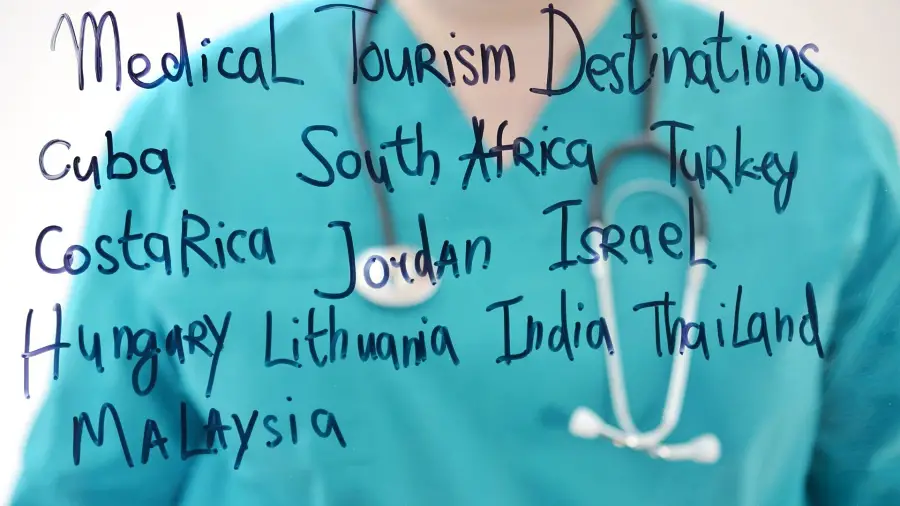The rising cost of medical treatments in developed countries gave way to the popularity of medical tourism. Medical tourism is the practice of traveling to a different country to receive medical care. A tourist who receives medical care while traveling. In this article, Medical Tourism Destinations Compared will help you to decide what is best for you and your family.
According to the Centers for Disease Control and Prevention or CDC, millions of US residents travel overseas to receive medical treatments. Despite travel restrictions, medical travel in the US is on a sharp rise mainly because complex or specialized medical treatments are expensive, or the waiting time is too long at home. Why wait when you can travel and skip the queue and get your treatments within days, instead of months?
Most US residents travel to different countries for low-cost dental procedures and cosmetic surgery. People also travel for orthopedic procedures like hip or knee replacement, which will cost a fortune if done in the US, Canada, or Australia. Elective surgery is about 50% to 70% less expensive in Asian countries like India, Thailand, and Singapore.
Sometimes a procedure is not offered in a particular country, or a country specializes in a specific treatment, such as facial feminization surgery or gender reassignment surgery.
Is it a good idea to travel overseas instead of getting a procedure done in your home country? It depends on the situation, but if you’re wondering where the best places to experience medical tourism are, here are our recommendations:

What are Popular Destinations for Medical Tourism?
South Korea
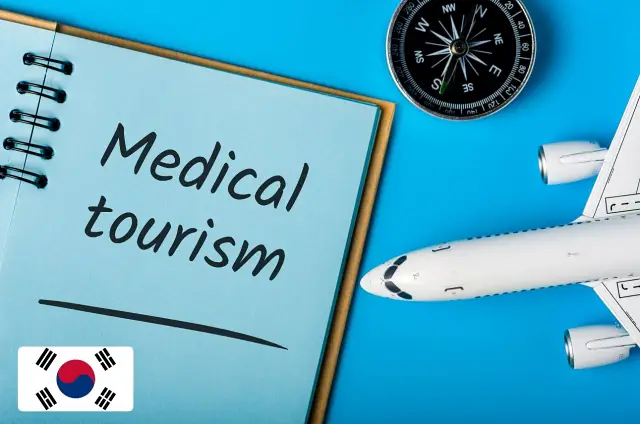
$$$
Pros
- High-quality yet low-cost healthcare
- Medical visas are granted to foreign patients
- Tour packages combining leisure and medical treatments
- Specialized treatments that are not offered in some countries
- Easy to get in and out of the country because it is a tourist destination
- An excellent destination for invasive and non-invasive cosmetic treatments
- Accessible with direct flights
Cons
- Extensive procedures can be expensive
- Long waiting times
- Potential language barriers
- Cultural differences
- High out-of-pocket expenses
Topping the list of the best destinations for medical tourism is South Korea. The country boasts the best healthcare system in the world and is renowned for its “best-in-class standards”, hi-tech medical facilities, trained medical professionals, and specialized medical procedures.
Apart from having the most efficient healthcare system in the world, South Korea is also number 1 in OECD’s healthcare access. That’s why it’s unsurprising that the country receives the most medical tourists. In 2019, South Korea attracted 497,000 patients.
There is also an effort by the government to provide healthcare access to foreigners or tourists through the Act Supporting the Overseas Expansion of Medical Services and Attraction of International Patients (Presidential Decree No. 27241), which was implemented in 2016.
This led to partnerships between local hospitals and clinics with travel agencies and diplomatic offices. The influx of foreign patients also led to the establishment of medical tourism support centers in major cities across South Korea.
In fact, one of the newest medical tourism support centers in South Korea was launched at the Incheon International Airport to help foreign patients get quick and easy health checkups and consultations as soon as they land in the country. These support centers also recommend and even book hospitals and nearby restaurants.
Besides plastic surgery, Korea is a preferred destination for patients requiring cancer treatments, internal surgery like organ transplants, and robotics surgery. Compared to US rates, medical procedures in South Korea is 30% to over 80% cheaper, with a lower mortality rate.
Summary: South Korea is one of the world’s leading destinations for medical tourism. It attracts millions of medical tourists because of the reasonable medical costs, exceptional medical services, and specialized treatments not offered in some countries. Many hospitals also provide tour packages that combine medical procedures with leisure activities for a more enjoyable stay.
Thailand
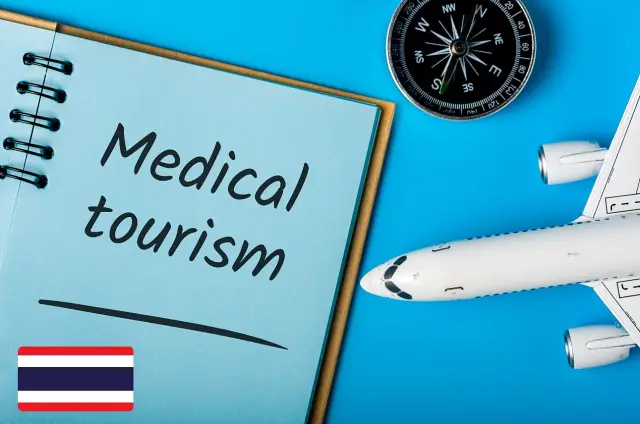
$$
Pros
- High-quality yet low-cost healthcare
- Medical visas are granted to foreign patients
- Tour packages combining leisure and medical treatments
- An excellent destination for invasive and non-invasive cosmetic treatments
- An excellent destination for complex medical procedures
- Easy to get in and out of the country because it is a tourist destination
- a dedicated tourist visa, for the patient and family members
- Short waiting times
- Cheap airfare and accommodations
- Accessible with direct flights
Cons
- Potential language barriers
- Cultural differences
- Potential for large medical bills at private hospitals
- Quality of care varies between clinics or hospitals
Thailand is where low-cost treatment meets excellent healthcare service, it has become one of the best places to get elective/non-elective surgery, health checkups, and plastic surgery. Over 2 million medical tourists travel to Thailand annually, taking advantage of the country’s sophisticated healthcare technologies, world-class surgeons, and exceptional amenities.
Recently friends of mine had a comprehensive medical checkup while on vacation and were able to walk away with the results in had on the same day that the checkup was done. Something that is no longer possible in many parts of the West anymore. They like to keep your results away from you.
The national government made significant investments to improve the country’s healthcare infrastructure for years. The combination of strong government support, expanding medical tourism industry, a collaboration between public and private hospitals for aid, and all 37 private hospitals acquiring JCI accreditation elevated Thailand’s standing as a destination for medical tourism globally, according to the Johns Hopkins University Global Health Security Index (2021).
Another contributing factor to Thailand’s skyrocketing medical tourism industry is the country’s quick response to the pandemic outbreaks. In Bangkok alone, more than 900,000 of the 16 million tourists it receives are expected to seek medical attention.
Overall, Thailand landed 5th as one of the world’s medical tourist destinations and the first in Asia, growing by 16% each year.
Aside from facelifts, rhinoplasty, and gender reassignment surgery, Thailand is an excellent country for bypass, orthopedics, oncosurgery, spine, and neurosurgery. A facelift that costs $15,000 in the US would only set you back $2000 to $3000 in Thailand. You can expect as much as 75% savings if you go to Thailand for any kind of surgery compared to US rates.
Moreover, there are plenty of beaches all over the country, so you can take a relaxing vacation while you recover from the procedure. In fact, many medical tourists combine medical travel with a getaway. Many hospitals also have modern amenities to make every experience comfortable and worth the extra expense. The experience at some of Thailand’s hospitals is akin to a five-star resort, with private suites and room for your family to stay with you.
Summary: Thailand is one of the top medical tourism destinations in Asia. The country is renowned for its robust medical infrastructure, exceptional patient care, and state-of-the-art facilities. The short waiting times, specialized treatments, affordable healthcare packages, and warm, friendly medical staff members appeal to millions of medical tourists. Because it’s a tourist destination, many medical tourists spend recovery in any of the county’s famous attractions.
Taiwan
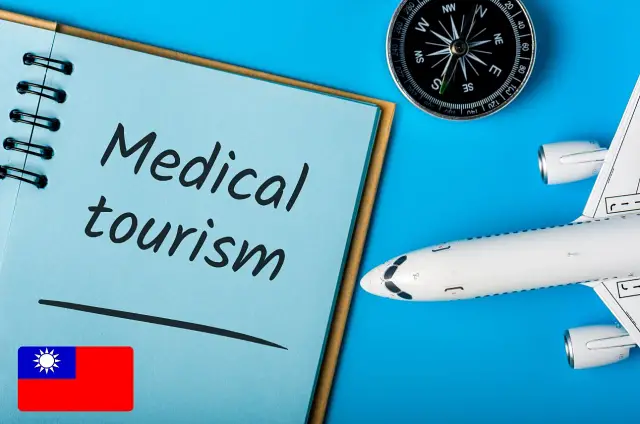
$
Pros
- High-quality yet low-cost healthcare
- Medical treatment permits and medical visas are granted to foreign patients
- Short waiting times
- Hospitals offer quarantine plans and medical plans to the Ministry of Health and Welfare for foreign patients
- Cheaper medical costs than Thailand and India
- Cheap airfare, and accommodations
- Accessible with direct flights
Cons
- Potential language barriers
- Cultural differences
- Potential for large medical bills at private hospitals
- Some prescription medications are illegal in Taiwan
- Most hospitals require upfront payment before the procedure, even for emergency care
Taiwan ranks high in having the best healthcare system in Asia and 13th in the world. About 6.2% of the country’s GDP is spent on healthcare. There are 36 elite hospitals in Taiwan, 10 of which are JCI accredited. Both private and public healthcare facilities uphold the highest standards in healthcare, and you can expect excellent customer service no matter simple a medical procedure is.
Like Thailand, South Korea, and Singapore, Taiwan hospitals boast cutting-edge technologies, modern facilities, and hi-tech amenities. They have some of the best hospitals in all of East Asia.
Part of Taiwan’s popularity as a medical tourism destination is its free public health insurance, managed by the government. With free healthcare, residents can enjoy high-quality healthcare without the eye-watering costs.
What makes Taiwan’s healthcare system a cut above other countries is that ex-pats can be given some privileges if they live in the country for more than four months.
Major surgeries in Taiwan are about 20% cheaper in comparison to UK and US. Heart bypass surgery costs between $50,000 to $200,000 in the US, but in Taiwan, it’s approximately $10,000 to $20,000. Hip replacement surgery in the US would set you back $30,000 to $50,000, but it only costs $7,000 to $8000 in Taiwan. The rates are cheaper than established medical tourism destinations like India and Thailand.
Summary: For over a decade, Taiwan has gradually built and enhanced its own healthcare infrastructure, making the country’s healthcare system one of the best in the world. The national government and private sectors have invested heavily in expanding medical facilities to accommodate the demand for high-quality yet low-cost healthcare.
Singapore

$$$
Pros
- Low mortality rate
- Best-in-class healthcare infrastructure
- Exceptional healthcare using the latest techniques and technologies
- Medical visas are granted to foreign patients
- The best destination for cancer treatment
- The best destination for complex orthopedic procedures
- Accessible with direct flights
Cons
- Expensive medical treatments
- Approval for a medical visa takes at least 6 weeks
- Shortages in acute hospital beds
- Shortages in long-term care
- Expensive accommodations
Singapore is a premier destination for medical tourism, having some of the most hi-tech medical facilities in the world. In fact, Singapore is second in the world for medical tourism and has always been consistently topping the world’s best-in-class medical infrastructure on a global scale.
Even after having one of the best medical infrastructures in Asia and the world, Singapore has expanded its medical services and expertise over the last 20 years, investing a total health expenditure of 4.47% of the gross domestic product. Many of its elite hospitals offer complex surgery using the latest techniques and technologies.
Because Singapore has an established healthcare infrastructure, millions of tourists visit the country for affordable medical treatments. More than 500,000 patients flock to the country for medical procedures, particularly heart surgery, cancer treatment, and complex orthopedic procedures.
While medical costs aren’t as affordable as in Thailand or Taiwan, they are relatively cheaper than treatments in the US and UK. Knee replacement surgery in Singapore costs $16,000, while the same procedure would cost $35,000 in the US.
Singapore is one of the best countries to visit for cancer treatments. Life expectancy in Singapore, particularly the infant mortality rate, is years longer than in the UK. In fact, Singapore has the lowest infant mortality rate in the world.
Summary: Singapore leads in exceptional healthcare with its “best-in-class” healthcare infrastructure, high-tech facilities, modern hospitals, and excellent customer service. It’s the best place to get complex procedures done, such as hip or knee replacement surgery and cancer treatments, with a high mortality rate.
Brazil

$
Pros
- High-quality yet low-cost healthcare
- A great destination for invasive and non-invasive cosmetic treatments
- Excellent plastic surgery packages
- Easy to get in and out of the country because it is a tourist destination
Cons
- No medical visa
- Short visa for medical treatments
- Potential language barriers
- Cultural differences
- Differences in medical standards will require in-depth research
- Indifference between public and private sectors for medical tourism
- National and international accreditation are not publicized properly
- Lacking an internal structure for receiving foreign patients
- Lacking structure in the cities for accepting foreign patients
- Poor transportation systems
Brazil is a renowned holiday destination because of its fabulous nightlife and beautiful beaches. It’s also another of the world’s top medical tourism destinations.
Because of the beach culture, the country is highly image-conscious. Brazilians are known for their bronzed beach bodies and impeccable grooming habits. Teenagers are conditioned to be very conscious of their shape and appearance. Being image conscious, many go to the doctors to achieve their dream bodies or, at the very least, enhance their God-given physique.
Nip and tucks are so prevalent in Brazil that these are almost considered routine procedures. The country has more plastic surgeons per capita than the US. People go to Brazil to get their bodies done the same way they go to Korea to get their faces done. Those who undergo plastic surgery don’t hide it either – Brazilians perceive cosmetic surgery as a status symbol.
Over the past years, women have earned more disposable income, which fueled the demand for cosmetic surgery. As plastic surgery boomed domestically, word spread internationally, leading to an influx of medical tourists.
Brazil carried out about 1.5 million aesthetic surgeries – the highest in the world. Some of the most popular procedures in Brazil are liposuction, breast augmentation, abdominoplasty, butt augmentation, flankplasty (lower body lift), and Brazilian butt lift, which the Kardashians popularized.
For health treatments, Brazil offers a Visitor’s Visa (VIVIS) with a stay for up to 90 days for the purpose of health treatment. This visa is only intended for short-lasting medical and therapeutic treatments.
Summary: Brazil is incredibly image-conscious, and its reputation for its cosmetic procedures has grown popular among medical tourists. Many hospitals offer affordable healthcare packages. Because it’s a tourist destination, Brazil is accessible. It’s easy to get in and out of the country. But there are many important factors to consider before getting a complex medical procedure in Brazil because the health standards vary in different clinics and hospitals.
Mexico
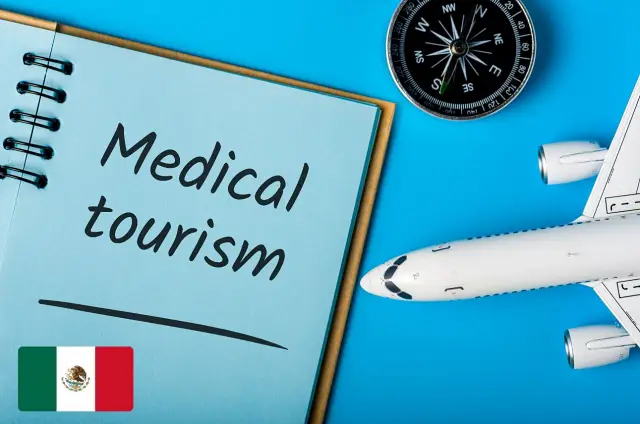
$$
Pros
- High-quality yet low-cost healthcare
- High success rates and excellent safety records
- An excellent destination for invasive and non-invasive cosmetic treatments and weight loss surgery
- Excellent plastic surgery packages
- Medical visas are granted to foreign patients
- Accessible with direct flights
Cons
- Potential language barrier
- Doctors have no malpractice insurance
- Patients cannot sue for malpractice because of Mexican laws
- No medical visa set up for patients
- Potential for large medical bills at private hospitals
- Quality of care varies between clinics or hospitals
About 1.4 to 3 million patients travel to Mexico annually for low-cost yet high-quality medical treatments. The country is just a few hours away from the US and Canada, so most tourists are from these countries. In fact, about 70% of the medical tourists in Mexico are from California, Texas, and Arizona.
Because medical procedures are costly in the US, many Americans happily cross borders to Mexico for inexpensive health treatments. Visa-free tourism is also offered to more than 70 countries, including the UK, Australia, Japan, New Zealand, and most EU countries.
Each city has at least one elite hospital with state-of-the-art facilities. Highly experienced nurses, doctors, and surgeons provide a complete healthcare program for patients. Waiting time is also much shorter compared to US hospitals. Mexico’s medical training and healthcare standards are similar to US hospitals, but the rates are more affordable.
An elective treatment in Mexico is 50% to 75% cheaper compared to US rates. Bariatric surgery is very popular in Mexico. Gastric sleeve costs about $15,000 to $25,000 in the US but only $4,000 to $6,000 in Mexico. Hip Replacement surgery costs around $45,000 to $70,000 in the US but is only $9,000 to $14,000 in Mexico.
There is no specific visa given to medical tourists. Still, the Mexico tourist card or FMM (Forma Migratoria Múltiple) is mandatory for all foreigners traveling to Mexico for business, leisure, and tourism purposes. It has a validity of 180 days.
Summary: Because of rising healthcare costs in the US and Canada, over a million tourists travel to Mexico yearly to take advantage of affordable medical treatments, especially plastic surgery, and weight loss procedures. Despite not having a visa specifically for medical tourists, Mexico offers up to 180 days of stay in the country for patients.
India
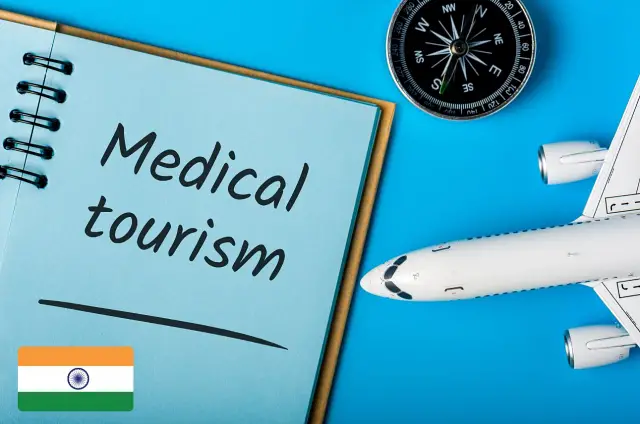
$
Pros
- High-quality yet low-cost healthcare
- Short waiting times
- Medical visas are granted to foreign patients
- Easy to get in and out of the country because it is a tourist destination
- Cheap airfare and accommodations
- Accessible with direct flights
Cons
- Short stay for medical treatment (up to 60 days)
- Potential language barrier
- Quality of care varies between clinics or hospitals
- Sanitation and hygiene issues with low-end clinics and hospitals
- The unfamiliar environment may cause stress for medical tourists
The medical tourism industry in India generates $6 billion and is expected to balloon to $13 billion by 2026. Some 2 million medical tourists go to India annually for IVF treatments, liver transplants, and dental procedures, to name a few. Many also seek wellness and cosmetic treatments in the country.
Most medical tourists visiting India are from Southeast Asia, the Middle East, and Africa. Visitors from Canada, China, Australia, and Russia visit India to take advantage of its inexpensive healthcare treatments.
Like most medical travel destinations, India’s national government has invested heavily to attract medical tourists. Special provisions were approved for medical tourists, including offering medical visas. Patients can stay up to 6 months in the country, and foreigners can receive any medical treatment except for organ transplants, which will require a medical visa.
Cardiovascular surgeries are some of the most popular health treatments in India. Heart bypass costs only $7,000 in India, while Angioplasty costs as low as $5,000. Knee replacement surgery is only $6000 in India, while Spinal fusion costs $10,000 to 16,000.
Summary: India is one of the top destinations for medical tourism because the medical treatments are significantly lower than US and UK rates. The country has some of the best hospitals in the world. Trained professional staff provide exceptional healthcare services to medical tourists. It’s a great place for low-cost cancer treatments, cardiac care, and fertility treatments.
Costa Rica

$$
Pros
- High-quality yet low-cost healthcare
- Wide variety of medical procedures
- Short waiting times
- Easy to get in and out of the country because it is a tourist destination
- An excellent destination for invasive and non-invasive cosmetic treatments
- Accessible with direct flights
Cons
- No medical visa
- Potential language barriers
- Limited insurance coverage for medical tourists
- Potential for large medical bills at private hospitals
- Quality of care varies between clinics or hospitals
Costa Rica is best known for its ecotourism, having a total of 4% total biodiversity in the country. But tourists aren’t just there to connect with nature or check out the local wildlife. Many are seeking affordable treatments in Costa Rica.
In fact, medical tourists account for 6% to 8% of the total tourists that enter the country every year. Costa Rica is renowned for its dentistry and plastic surgery. Combined with a good education system, government-supported medical infrastructure, and elite hospitals with certified doctors and surgeons, medical tourism in Costa Rica is booming.
According to the World Health Organization, the quality of Costa Rica’s healthcare services is similar to that of the US. The country also established the Medical Tourism Corporation of Costa Rica with private and public hospitals to provide low-cost healthcare services to locals and foreign guests.
Because of the thriving ecotourism, many medical tourists receiving treatments in Costa Rica stay in the country to recuperate. And even with a combined cost of a holiday + medical care, the rates are still cheaper than US, Canada, or UK rates. Medical procedures in Costa Rica are about 40% to 80% cheaper than US prices.
Summary: Costa Rica offers a wide range of medical treatments, and most of these procedures are 70% to 80% cheaper than US, Canadian, or European rates. Because it’s a tourist destination, many patients combine a medical procedure and a getaway in Costa Rica.
Spain
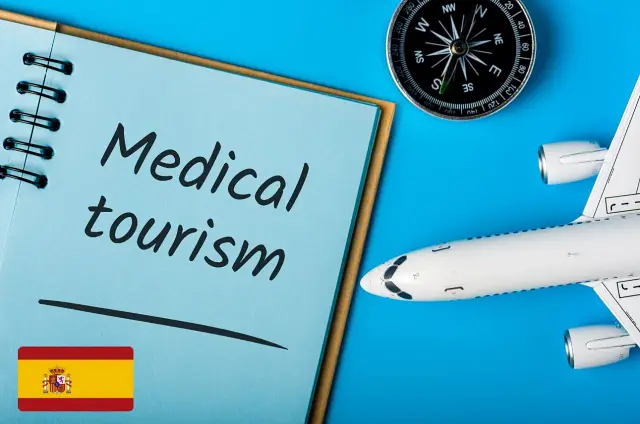
$$$
Pros
- Exceptional healthcare
- Medical visas are granted to foreign patients (Medical Schengen Visa)
- An excellent destination for complex surgeries
- A great destination for dental procedures
- Accessible with direct flights
- An excellent destination for fertility treatments, complex surgery, and cosmetic procedures
Cons
- Potential language barrier
- Schengen visas can be difficult to obtain
- Long waiting times
- Expensive medical treatments compared to developing medical tourist destinations
- Expensive accommodations and airfare
Although Spain is not as well-known as Thailand or South Korea, it is a go-to for patients requiring more complex surgeries, particularly orthopedic, organ transplant, dentistry, and obesity surgery. The country’s medical tourism industry is growing by 20% every year.
Spain has over 750 hospitals nationwide and over half a million certified doctors and nurses. The medical tourism industry in Spain has been valued at around 500 million euros annually and rising. Thousands of medical tourists visit Spain to experience modern, comfortable facilities, exceptional medical care, and short waiting times.
The government is quite hands-on when it comes to managing medical tourism in the country. The Spanish Health Ministry supervises all hospitals to ensure only the highest standards in healthcare for local and foreign patients. Currently, there are 31 JCI-accredited hospitals in Spain.
Some of the most popular treatments in the country are cosmetic surgeries, orthopedic procedures, fertility treatments, LASIK, and Bariatric surgeries. Spain also scored the highest rating on organ transplants, with a donation rate of 36 per million people. This led to a surging number of patients requiring organ transplants. Medical procedures in Spain are about 30-70% less expensive compared to US and Canadian rates.
Summary: Medical treatments in Spain are 30% to 70% cheaper than most European countries as well as Canada, the US, and the UK. However, the rates are more expensive than medical tourist destinations like South Korea, Singapore, Thailand, and India.
Israel

$$
Pros
- High-quality yet low-cost healthcare
- An excellent destination for complex surgeries
- Wide variety of medical procedures
- An excellent destination for bone marrow transplant
Cons
- No medical visa
- Potential language barrier
- Medical treatments are more expensive compared to other medical destinations like Thailand or India
- Political concerns
- Quality of care varies between clinics or hospitals
Ranked 8th in the global medical tourism index for its outstanding healthcare infrastructure and with over 20 JCI-accredited hospitals, Israel is an emerging medical tourism destination.
Most of the medical tourists are Americans. An estimated 1.6 million American medical tourists travel to Israel yearly, and the number keeps rising. According to a report by the Medical Tourism Association (MTA), nearly 80% of the total number of medical tourists in the country is driven by affordability.
Besides the competitive prices and first-rate medical facilities, Israeli doctors and surgeons undergo rigorous training to provide exceptional medical care. The medical training in Israel is comparable to, sometimes even greater than, the US. Many doctors are also educated in the US and Europe, completing residencies at prestigious medical institutions.
Some of the most popular medical treatments in Israel are cancer-related treatments. Bone marrow transplants, Bypass surgery, and neurological treatments are also offered at much lower prices in Israel compared to the US and the UK.
Summary: Israel is an emerging hub for medical tourists thanks to low-cost yet high-quality health care. It’s an excellent destination for bone marrow transplants, orthopedic surgery, IVF, and heart surgery. Medical treatments are cheaper than US, Canadian, UK, or Australian rates but are more expensive than Thailand, Singapore, or India rates.
One thing to keep in mind before flying to Israel, the country has an ongoing conflict with Palestine and other Arab countries, which significantly affects tourism. No specific visa is given for medical tourism, but foreigners requiring medical treatments will receive a B/2 tourist visa with an optional extension from the Ministry of Interior.
Medical Tourism Destinations Compared, In Conclusion
Millions of patients travel to different countries for medical purposes because they require specialized treatment that their home countries lack. Some seek treatments because of the more affordable rates. Whatever reason you might have for going on a medical tour, be sure to conduct your research. Look for a destination that provides exceptional healthcare and excellent amenities at prices that you can afford. That will include the cost of getting there and back along with the cost of staying while you are treated. In this article, we have provided information on some of the top destinations available. There are many other places, such as Canada that will be attractive to US citizens, simply because they are next door and familiar.
Many countries, like Thailand, receive foreign guests for medical travel, and there are established guidelines to consider before traveling. Preparing your medical records and other documents is essential to speed up the admission process to a hospital. In short – be prepared, if you are traveling for medical reasons, you must have everything you need ready in advance. You should contact the facility you want to perform your procedure and check what they may require you to bring with you. Most likely they will perform their own checks to see if your condition has changed.
For simple procedures like getting a comprehensive checkup while you are traveling – I can only say, it is a good idea if you have difficulty obtaining the results in your home country.

